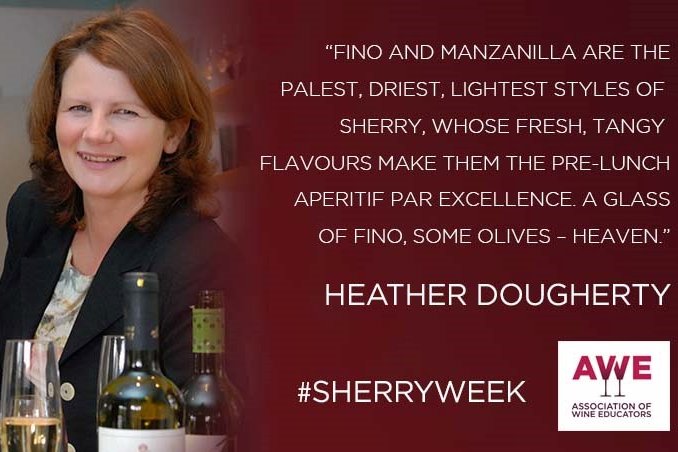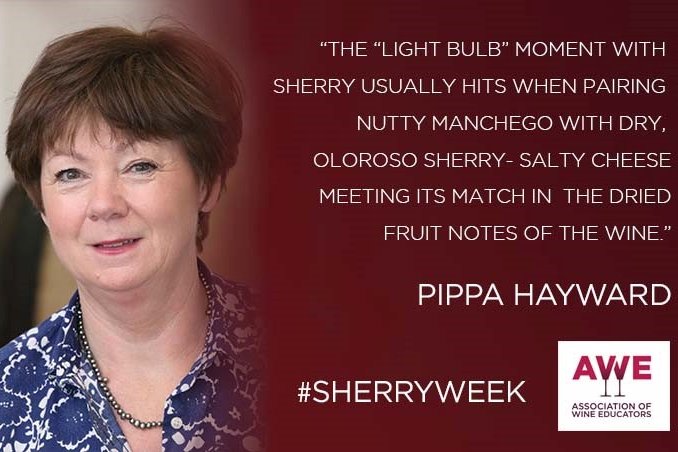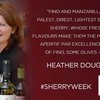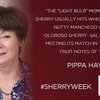Heather Dougherty Chair of the Association of Wine Educators believes there is plenty to be done to change the perception of this wonderful wine. “Sherry is not just sweet and not just for Christmas. Many of us think we know Sherry. When someone says the word Sherry, it almost certainly conjures up an image. Could it be:
What your grandmother drinks at Christmas?
What you put in your wicked Sherry trifle?
Or how about:
A pale, bone dry wine that is great to drink before Sunday lunch, THE aperitif par excellence.
An amber-coloured, nutty dry wine to savour with some salted almonds or tapas
A deep mahogany, lusciously sweet liquid redolent of nuts, dried fruit and caramel that is a brilliant match for chocolate, Christmas pudding and more
Sherry is all of these things…and more. It’s time we explored the diversity of colours and flavours that it has to offer."
Stephen Rosser believes innovation is key to developing the marketplace for Sherry with wine lovers.“In today’s fast moving wine world, people are always looking for the next, 'What’s new?';
In recent years, many Sherry Bodegas have responded by creating new “En Rama” Sherries. These “raw” Sherries are very limited releases of unfiltered wines, which are bottled straight from the cask with minimal treatment. This re-creates the experience of tasting Sherry in the Bodega, with the cellar master or “Capataz.” One of the leading masters is Antonio Flores of Gonzalez Byass, creator of Tio Pepe’s En Rama; he was recently awarded Fortified Wine Maker of 2016 by the International Wine Challenge.
Another of my favourites is Barbadillo’s Pastora En Rama, an aged Manzanilla (a Fino from the coastal town of Sanlùcar de Barrameda,) with pungent aromas of iodine tinged sea breeze, fresh sourdough and apples. We need to educate people about these wines and to understand that these En Rama Sherries will be deeper in colour, but also fuller in aroma, body and flavour, compared to regular Sherry. As they have not been treated, they need to be drunk as soon as possible; that shouldn’t be a problem!"
Pippa Hayward considers the polarized reaction amongst those she teaches, mostly young professionals new to the wine tasting game. “For all the rising popularity and more recently raised profile of 'good' Sherry in the UK, Sherry newbies, bemused by totally strange smells from Fino and Manzanilla, find it impossible to believe you might actually want to drink the stuff. Plying them with decent olives and roasted salted almonds persuades a few that there might just be a place for a wine raised in intimate contact with colonies of yeasts.
While it’s true that pale Sherry is the more popular, it is the more challenging to describe because the aromas are so far removed from the norm for a “white wine”. Those who’ve met autolytic smells in Champagne before may recognize some of them – most don’t.
The darker is assumed to be sweet and therefore beyond drinkable. The aromas of dried Christmas fruits and toasted nuts bely, to the surprise of everyone, a bone-dry wine. At this point I pass around some aged Manchego, more almonds and chorizo. The “light bulb” moment usually hits when everyone gets the pairing of the nutty Manchego and nutty Sherry- the salty cheese meeting its match in the dried fruit notes of the wine. Showing both a Fino or Manzanilla and a Dry Oloroso dramatically ups the chances of a positive response to Sherry.”
Kevin Ecock draws on his discussions with César Saldaña, Director General of the Consejo Regulador for Jerez, to answer the very simple question, ‘What is Sherry’? “if we have a quick look at those markets where Sherry is currently selling well and actually increasing its market share. Among those countries I number Japan, a range of Eastern European countries, the U.S. and indeed our home market Spain. In those markets Sherry has been successfully positioned at price points where ongoing investment in the market is possible. Dry Sherry styles such as Fino, Manzanilla, Amontillado and Dry Olorosos are the growth categories. These styles have a very clear ‘winey’ approach as opposed to the sweeter cream styles favoured in the UK & Ireland and are being drunk as an accompaniment to food and are now becoming part of a lifestyle culture in those countries."
"Taking this theme forward wine educators and wine trade members need to promote brand awareness and product familiarity. These can be strengthened if we are encouraged to serve Sherry with the same parameters as we use to serve all the general wine categories. How should we serve Sherry? Serve it as a wine.”
The views and opinions expressed in this article are those of the authors and do not necessarily represent those of El Consejo Regulador.













